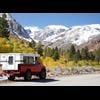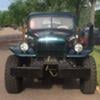Wallowa,
I used the CLD tiles on the inner ceiling of my 1993 Pickup cab. It used to oil can a bit. It does not do so any longer.
I am pretty familiar with how metal bends and resonates as well as with vibration testing airborne and spaceborne assemblies but I am not an expert in sound damping. However, there are folks out there that are.
Thanks for that....resonating/vibrating produces sound, of course in varying frequencies and amplitudes...cause of that movement and how to stop or greatly lessen that movement is the crux for dealing with our TC in FWCs. If tops sheet only "quivered" the sound might be a hum, but the rapid and significant displacement of the top sheet vertically produces very loud bongs/pops/rounds-going-off sound.
















